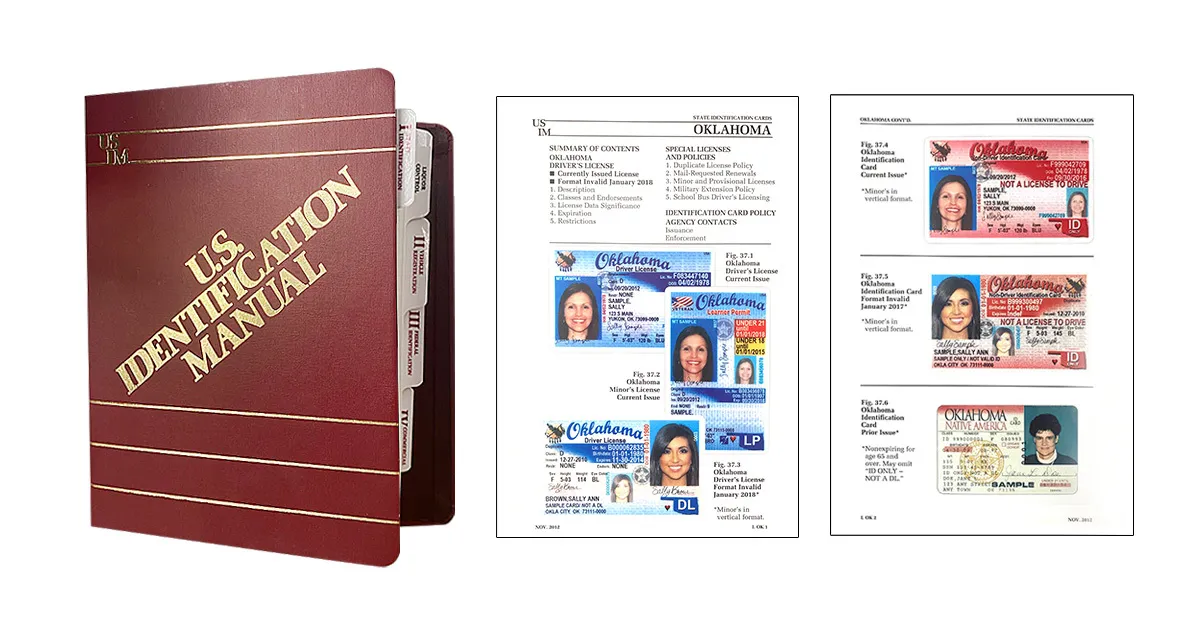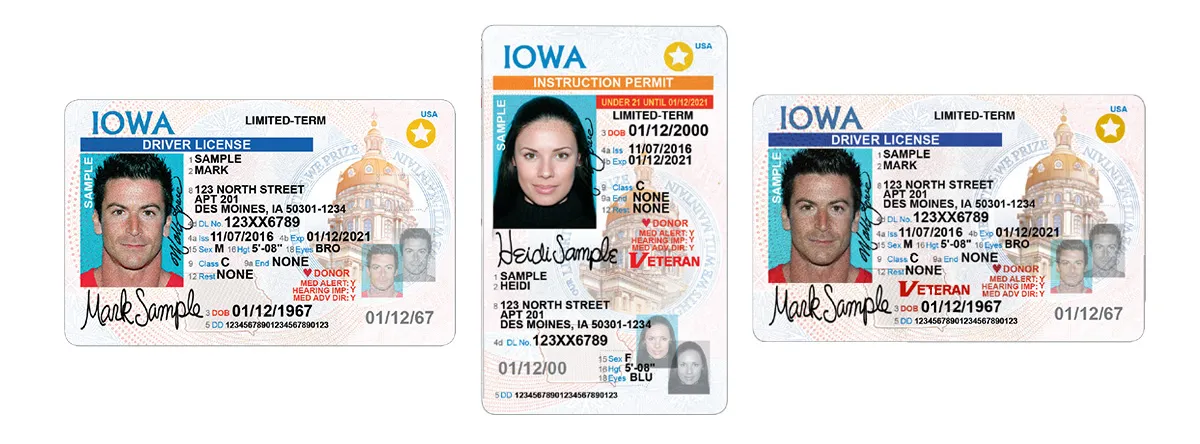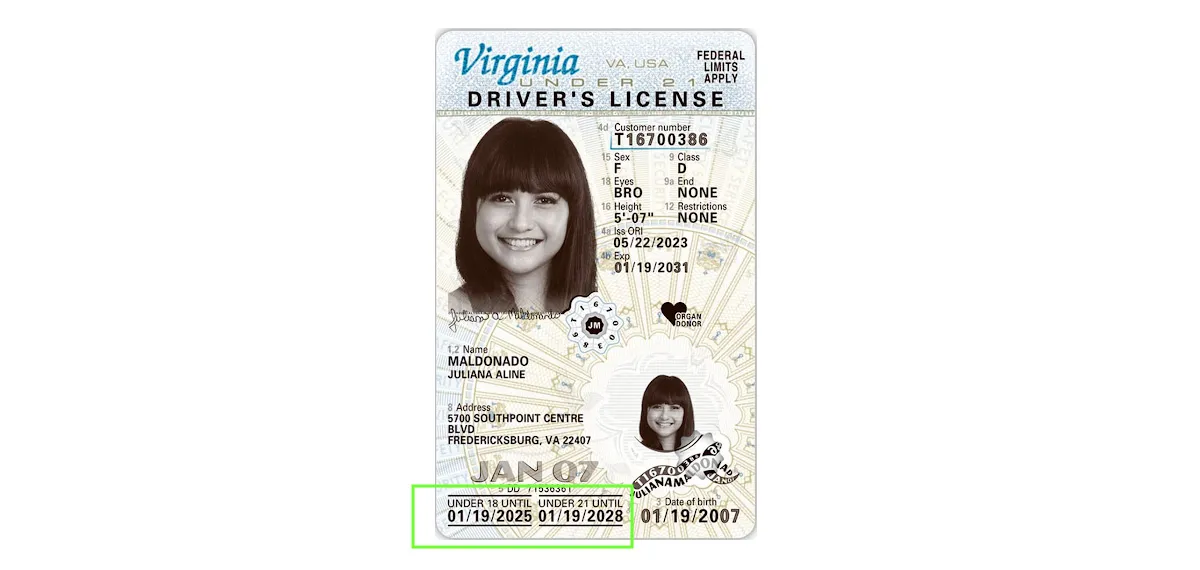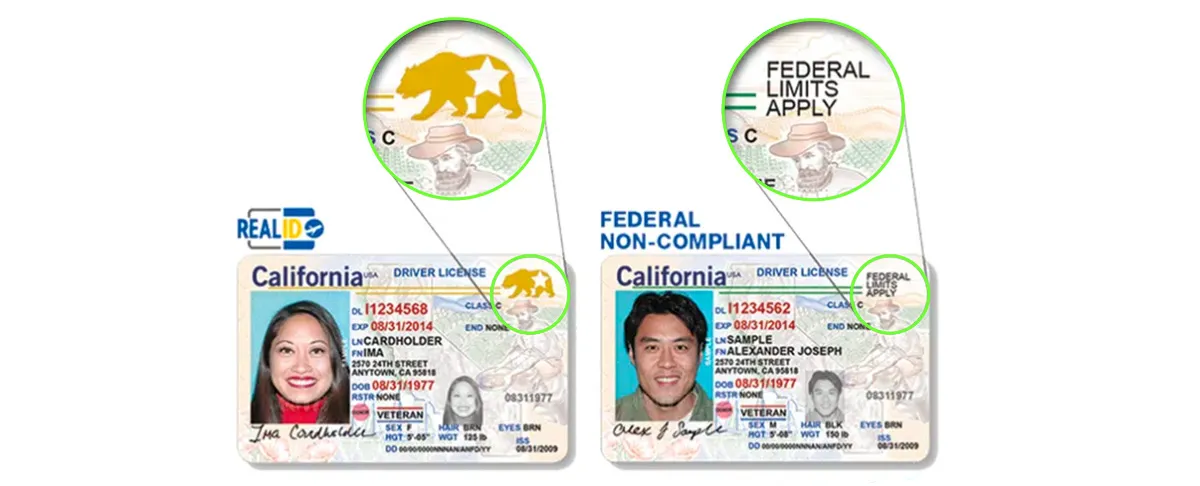Updated May 5, 2025
When we planned this series, we didn’t think that we’d eventually include the documents from the US. However, there are still a couple of tricky things about the diverse ecosystem of US national identity cards and other domestic documents.
So, let’s have a look at them.
Subscribe to receive a bi-weekly blog digest from Regula
The challenges of processing IDs in the US
Compared to Thai or Ethiopian documents, which have non-Latin scripts, creating some issues for OCR, the challenge with US documents lies in another domain—their extreme diversity.
As of May 2025, there are 2,978 templates of American documents in Regula’s database (with 739 of them being REAL IDs); more than enough to confuse a bartender who has to make sure customers are of age.
This diversity is primarily due to the nature of the US, a political entity which exists as a federation of self-governing states, territories, and jurisdictions that issue local identity documents. There are even US identification manuals with pictures and detailed descriptions of domestic documents to help identify them.

Identification manuals containing detailed information on US identity cards and driver's licenses issued across the States help local authorities navigate the scattered identity landscape.
Security concerns also contribute to this enormous variety. Back in the 2000s, there was a surge in fake IDs and licenses across the States. The poor security level of domestic identity documents made it easy for fraudsters.
Today, US ID cards and driver’s licenses are protected by the latest industry standards. They may include see-through secure windows, micro texts, holograms, kinegrams, and IR and UV features. All identity documents are also regularly updated, which multiplies the difficulties due to the various versions in circulation.
Numerous types of documents
While all American ID cards and driver’s licenses are aligned to a single national standard by AAMVA, this standard is advisory, which leaves room for interpretation by local authorities. As a result, there are many variations of the same type of document in the States.
Let’s take a driver's license. Apart from the standard non-restricted licenses commonly used by American drivers, plenty of other variations that can differ depending on the state are in circulation. For example:
Learner’s driver’s licenses or instructional permits;
Graduated driver’s licenses;
Commercial driver’s licenses;
Commercial learner permits;
Interim driver’s licenses;
even Alcohol restricted driver’s licenses (the case for some Alaskans), etc.

In practice, US driver’s license verification turns into verifying not one but dozens of documents issued in different states. For instance, these are some examples of driving-related licenses and permits from Iowa.
Surely, this list is far from complete, as most driver’s licenses (as well as other ID documents) can also be divided into several groups.
Under 18 and 21 documents. According to each state’s legislation, some restrictions apply to younger citizens. For example, having an “under 18” driver’s license, teens may be subject to the following rules (depending on the state):
A curfew between midnight and 4 or 5 am
May only drive with family members as passengers
Carry just one passenger under 21 unless they are with parents, etc.
Typically, such age-dependent documents are of a vertical orientation.

Age-restricted documents include the dates when their holders are 18 or 21, so there’s no need for mental calculations.
REAL ID vs. standard document.The REAL ID Act is a national standard for state-issued ID cards and driver’s licenses that allows holders to use these documents to travel nationwide and enter government facilities. Standard American ID cards and driver’s licenses can be used within the state of issuance.
In practice, it looks like a golden star emblem placed somewhere on the front side. Depending on the state, the star can look slightly different. For example, in Californian documents, it’s placed within the bear silhouette.

While a REAL ID document and a standard one may look almost the same, they are officially two different documents.
The Real ID Act, passed by Congress in 2005, is a vital component of the US national security framework after 9/11. In 2013, the Department of Homeland Security (DHS) announced a phased enforcement plan for the standard implementation countrywide. From May 7, 2025 onwards, all American travelers must be REAL ID compliant to board domestic flights and access certain federal facilities.
More personal details on the holder
US identity documents usually include more personal data than ID cards and driver’s licenses issued abroad.
First, you can find the holder's height and weight, as well as eye and hair color. Second, almost all US identity documents include the bearer’s current address. If the citizen moves to another place, they must apply for a new document.

American ID cards and driver’s licenses include more details on the holder, such as home address, height, and eye color.
Another peculiarity concerns documents with "Donor" and "Veteran" insignia. By the way, these emblems can also occur together. The former mark—a red or black heart logo—testifies that the person is on one of the organ donor registries. The logo may be replaced with "Organ Donor" or "AHCD Donor" indicating the type of donor registry to which the donor belongs, such as state or national.

If the document bearer is on the list of organ donors, their identity documents include this information.
The “Veteran” emblem is printed on the face of the driver’s licenses and ID cards of people who have served in the US armed forces. The main condition for receiving a document with the emblem is to be honorably discharged from the service. A holder of a Veteran identity card can access government benefits and discounts in retail and restaurants thanks to being a member of statewide loyalty programs.

In the US, military retirees can apply for veteran identity documents that enable them to be included in local loyalty programs.
Back sides with barcodes
The back sides of American ID cards and driver’s licenses are worth taking a closer look at. There, you will see a barcode. Earlier, there were also magnetic stripes, but the barcode-only back sides replaced these variations, as the stripe disallowed new personalization technologies and the addition of new security features.
The code is designed in the PDF417 format. In practice, you may face both one- and two-dimensional codes. While the former includes one piece of data, like the document number, the latter usually contains more details. Interestingly, the weight and height data in the barcode and the visual inspection zone (VIZ) may differ. For example, the VIZ provides height in feet and inches. The barcode may only contain inches.
Today, there are many documents in circulation containing numerous barcode data format variations, according to different AAMVA releases from different years. Your IDV solution needs to support all of them to verify US identity documents properly.

All American ID cards and driver’s licenses have a barcode on their back side. An Arizona driver’s license features a one-dimensional barcode.
Unique document design in different states and territories of the US
Each US state and territory has a unique design for its documents reflecting its symbols and landmarks. For Arizona, it’s a desert, a cute ringtail, Saguaro cactus, and, of course, the Grand Canyon. For Hawaii, it’s a rainbow. The Georgia ID features a huge peach.

Some variations of American ID cards.
There are 50 states, as well as Washington D.C., so each of them has a set of numerous documents. In addition to the states, there are territories under the American flag, such as American Samoa, Guam, the Northern Mariana Islands, Puerto Rico, and the U.S. Virgin Islands. All of those territories naturally have their own design for ID documents.
But that’s not all. The variety of documents issued in different locations of the US goes beyond background patterns. Data fields can consist of different font sizes, as well as colors—black, red, green, blue, etc.
The principles behind formulating document numbers also vary. Usually, the number includes various personal data like the date of birth. Some states—for instance, Wisconsin—also add check digits in the document number.
In addition to diversity, this creative design can sometimes create issues for OCR. If a document is not produced properly—for example, if it has a bright background—this might obstruct proper data recognition.
For example, this might be the case for Massachusetts documents, which feature contrasting a flickering hologram covering some data fields.

US driver’s license verification can be a tricky task because of design peculiarities. The whimsical hologram on a Massachusetts driver’s license complicates image recognition.
We at Regula handle this potential issue by providing an extra description for potentially problematic templates in our IRS.
Document updates
In addition to unique designs for documents in each state and territory, those designs are often updated. This year, they started releasing a new design of driver’s licenses and American ID cards in many states, which we have already added to our Regula database. Among them are Arizona, with its wolf in ultraviolet, the District of Columbia, Idaho, Virginia, West Virginia, and Wisconsin. Furthermore, the US authorities have also updated their visa design.
The frequency of updates isn’t set in stone. For example, Arizona issued a new series in 2001, 2014, and now in 2023. Idaho, which likely has the largest variety of driver’s licenses (71 templates in Regula’s database), issued new series in 2003, 2005, 2011, 2016, and 2023.
The challenge here is that every update involves creating a bunch of new documents (e.g., every type of driver’s license, real and standard IDs, regular and under 18, 21, etc.). And all of them might be in circulation.

The variety of driving licenses issued in Idaho from 2003 to now.
How to effectively process US documents
Given the high variability, it’s difficult to reliably verify an ID or, say, verify the age, especially being presented with an ID that was issued in another state. The key to effectively handling US documents is taking advantage of an extensive document template database.
If your business involves reading and verifying US documents, one of the first things you should verify is how many templates your solution has in its database, as well as how—and how often—it’s updated.
In Regula’s database, we’ve already collected 2,978 US ID templates (with 739 of them being compliant with REAL ID), and we’ll add new ones in no time, as soon as any of the states comes up with a new beautiful design. Feel free to contact us if you’d like to learn more.





